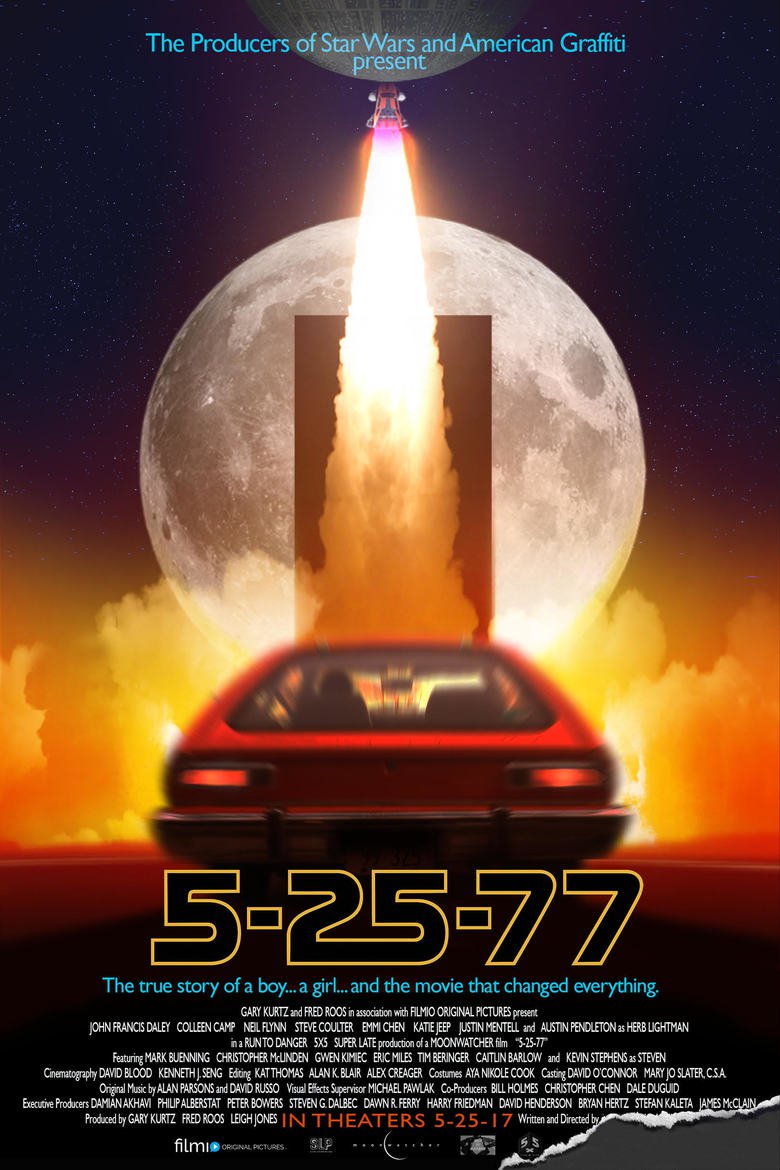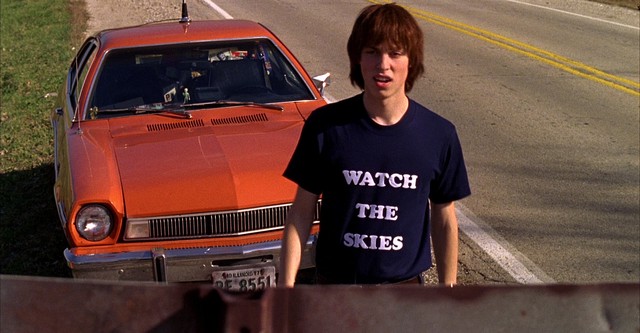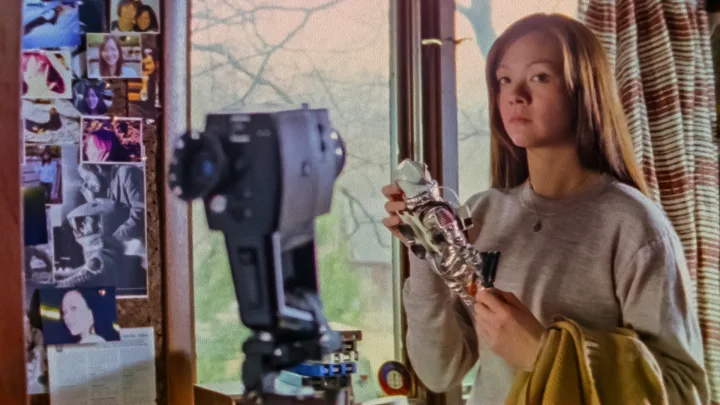 First off, that title is misleading. 5-25-77 is the date STAR WARS made its bow, suggesting this film is about that movie and its impact. In fact STAR WARS is but a portion of 5-25-77’s whole (the movie isn’t brought up until the halfway point), with a more accurate title being 6-24-70, the release date of 2001: A SPACE ODYSSEY, which plays a far greater role.
First off, that title is misleading. 5-25-77 is the date STAR WARS made its bow, suggesting this film is about that movie and its impact. In fact STAR WARS is but a portion of 5-25-77’s whole (the movie isn’t brought up until the halfway point), with a more accurate title being 6-24-70, the release date of 2001: A SPACE ODYSSEY, which plays a far greater role.
5-25-77 is the date STAR WARS made its bow, suggesting this film is about that movie and its impact.
5-25-77 was one of a handful of autobiographical nostalgia-fests to appear in 2022 (the others being APOLLO 10½: A SPACE AGE CHILDHOOD and THE FABELMANS), and the most hard-nosed of the lot. Its maker was Patrick Read Johnson, a veteran special effects ace and sometime director (with SPACED INVADERS and BABY’S DAY OUT being his best-known credits), who sought to dramatize his early years as a movie-obsessed youngster in Wadsworth, Illinois. He had some high-profile assistance in the form of STAR WARS producer Gary Kurtz, which was no help in alleviating what turned into a near twenty year production.
…one of a handful of autobiographical nostalgia-fests to appear in 2022…
Principal photography spanned the years 2004-06, with the first cut shown at a STAR WARS convention on May 25, 2007, at the invitation of George Lucas himself. Following a cross-country 2012 road trip to raise further funds (which inspired a documentary entitled HEARTS OF DORKNESS), Johnson shot additional postproduction photography in 2015 and ‘16, with a new version test screened on May 25, 2017 (in route to what was supposed to be a May 25, 2021 release date). The film ended up having its long-delayed release, courtesy of MVD Entertainment, on November 22, 2022.
That Johnson took so long to get his film up and running isn’t at all surprising given the depiction of his teenage self (played by John Francis Daley), who comes off as flighty, temperamental and easily distracted. The same can be said for the film overall, which is constantly getting bogged down in arcane subplots, with its unofficial theme being how reality intrudes on the most carefully laid plans.
The structure is pure Hollywood wish-fulfillment, with the 1976-era Johnson, after making a number of incomplete super 8mm films, becoming determined to meet the famed special effects ace Douglas Trumbull. When his attempts come to naught his enterprising mother (Colleen Camp) gets involved, convincing the cynical editor of AMERICAN CINEMATOGRAPHER magazine to pull some strings and get her son a meeting with Trumbull, and maxing out her credit cards to buy him a plane ticket to LA. The flight goes off as promised, as does the Trumbull meeting, which Johnson botches rather spectacularly. He also meets a young Steven Spielberg and, most importantly, views footage of an upcoming film called STAR WARS.
Upon getting back to Wadsworth Johnson conceives a new gambit: he decides to buy multiple tickets to STAR WARS so all his friends and classmates can see it, and be afforded a glimpse into his personal reality. Things, however, don’t go as he hoped, with all sorts of distractions—his car being held hostage by a corrupt mechanic, his would-be girlfriend wanting to take their relationship to the next level and the fact that on 5-25-77 his local movie theater isn’t actually playing STAR WARS—conspiring to ruin his scheme.
It all coalesces into an oft-annoying and uneven yet heartfelt whole. In keeping with the reality-based aesthetic, Johnson packs the film with fully convincing 1970s period detail and an atmosphere that, thanks largely to an excellent performance by John Francis Daley, feels authentic. It’s been said that Johnson considered featuring Mark Hamill and Carrie Fisher in small roles, but was talked out of that idea by Hamill himself, who claimed (rightly) that it would take audiences out of the movie.
Johnson packs the film with fully convincing 1970s period detail and an atmosphere that, thanks largely to an excellent performance by John Francis Daley, feels authentic.
Things that do take us clear out of the movie are the fantasy sequences in which Daley recreates scenes from 2001. On hand, it would seem, as much for Johnson to show off his special effects prowess as to illuminate his younger self’s inner world, these scenes are far too prevalent. Another problem is with the 132 minute runtime, which may be an unavoidable result of the piecemeal filming schedule or possibly just directorial self-indulgence; whatever the explanation, it’s a punishingly long film.
Vital Statistics
5-25-77
Filmio/Moonwatcher Inc./MVD Entertainment
Director: Patrick Read Johnson
Producers: Gary Kurtz, Leigh Jones
Screenplay: Patrick Read Johnson
Cinematography: David Blood, Ken Seng
Editing: Alain K. Blair, Alex Creager, Kat Thomas
Cast: John Francis Daley, Austin Pendleton, Colleen Camp, Neil Flynn, Steve Coulter, Emmi Chen, Katie Jeep, Justin Mentell, Gwen Kmiec, Mark Buenning, Christopher McLinden, Caitlin Barlow, Ema Tuennerman, Eddie Kunz, Eric Miles, Tim Beringer, Yasmin Golan, William Holmes


